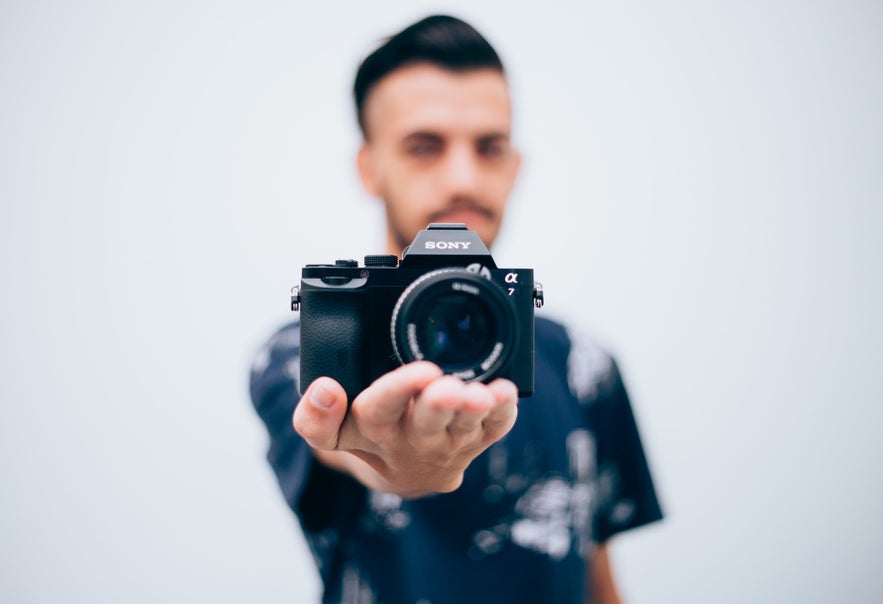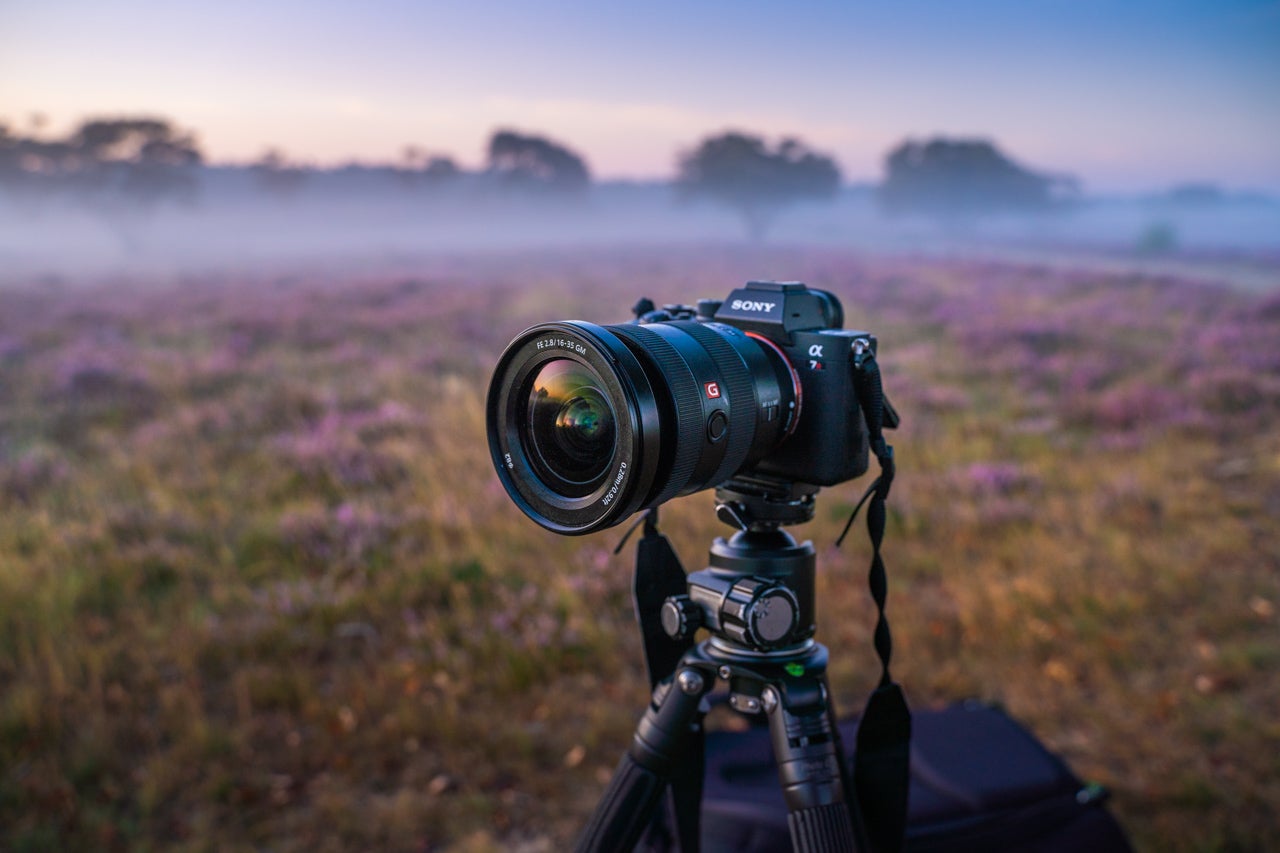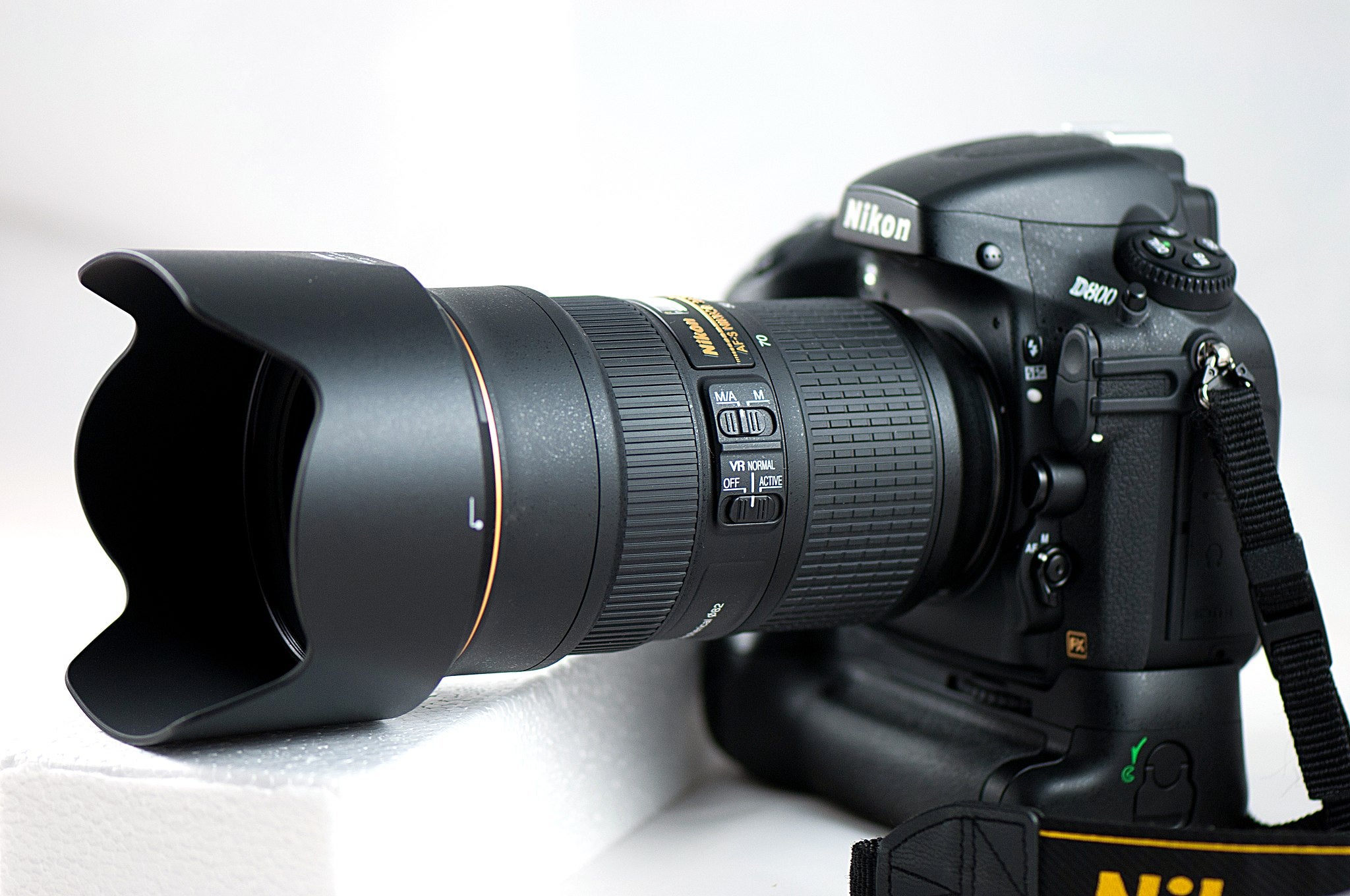
Photography as we know it today is a product of unbridled mutation. From the very beginning, it has seemed that one breakthrough in the art and science of making pictures would lead to another breakthrough... and another and then another. Think about it for a second. We went from zero to Leica in about 100 years time but now, as we find ourselves essentially drowning in gear options, it doesn't seem as though there have been many truly “groundbreaking” photographic revelations coughed up in recent years... until now.
- Check out these Patagonia Photo Workshops
- Find out the Best Photography Contests to Enter in 2020
- Learn about The Best Landscape Photography Lenses for Sony E-Mount Cameras
Perhaps the most incredible photography breakthrough of the last decade was introduced by Sony on a glorious October day in 2013. The announcement would drastically change the way thousands of landscape photographers went about the business of making photos and arguably come to dominate the full-frame digital camera market.
I’ve been laying it on pretty thick so many of you have guessed by now that I’m talking about the A7 line of Sony’s full-frame mirrorless cameras. So, today we’re going to talk about a camera which would become many landscape photographer’s best friend: the Sony A7R.
 The Sony A7R is one of the best ranges of cameras out there for landscape photography. Photo by: 'Adam Welch'.
The Sony A7R is one of the best ranges of cameras out there for landscape photography. Photo by: 'Adam Welch'.
At the time this article was penned, Sony has just introduced the fourth generation of their A7R camera. Yes, really. But before we get ahead of ourselves here, let's take a look at why the Sony A7R line of full-frame mirrorless digital cameras have become so beloved by Sony landscape photographers and photographers in general... myself included.
- See also: The Best Camera Bags for 2020
A Game Changer
First, a bit of context. It might not seem that way but six years ago, the world of digital photography was quite different. These were the glory days of the DSLR. Big cameras with full-frame sensors that were widely considered to be the absolute cream of the progressive professional or semi-professional photographer's tool kit.
 Nikon and Canon dominated the DSLR world until Sony burst onto the scene. Photo by: 'Adam Welch'.
Nikon and Canon dominated the DSLR world until Sony burst onto the scene. Photo by: 'Adam Welch'.
Nikon had recently blown everyone away with their D800E in 2012 and Canon had just upped the ante with their 5D MK3 around that same time. Both were and still are beautiful cameras. The D800E body tipped the scales at 900g (1.98lbs) with Canon’s 5D MK3 shaving off a bit of heft at 860g (1.89lbs). This was considered to be an acceptable weight for pro-grade, full-frame digital cameras in 2012.
The Nikon D800E especially piqued the interest of landscape photographers due to it’s extremely sexy 36.3 megapixel sensor and the exclusion of something called an “anti-aliasing” filter. This meant that the D800E was a devilishly sharp, fiendishly high-resolution camera which would be perfect for landscape photography. Life was great. Our pictures were wonderful. What more could we ask for?
And then... along came the Sony A7R MK1.
 The Sony A7R MK1 in action. Photo by: 'Adam Welch'.
The Sony A7R MK1 in action. Photo by: 'Adam Welch'.
It sounded too good to be true. A full-frame camera with 36.4 megapixel sensor, no anti-aliasing filter, a magnesium body (front panel at least) and all this squeezed into a dwarfed package that weighs practically half of its nearest technical competitor??? Are you serious? What’s more, the A7R MK1 hit the market priced at around $2,299 USD, making it exactly $1,000 cheaper than the D800E and a whopping $1,200 less than Canon’s 5D MK3.
 The mirrorless Sony A7R MK1 became a veritable contender against Nikon and Canon in landscape photography. Photo by: 'Adam Welch'.
The mirrorless Sony A7R MK1 became a veritable contender against Nikon and Canon in landscape photography. Photo by: 'Adam Welch'.
Reactions were predictable. Disbelief. Wonderment. Excitement. Could this new “mirrorless” digital camera really compete with a professional DSLR for landscape photography?
At first, some landscape photographers were skeptical. Many of us had invested thousands in our full-frame DSLR cameras and lenses. Now, we faced a new, albeit intriguing, yet largely unproven camera system with scarce few native lenses from which to choose...but it just looked so tempting. Then, gradually, the rumour came down that we could source lens mount adapters which would enable the use of many – if not all – of our current system’s lenses with the A7R.
 It became possible to use different manufacturer's lenses with the Sony A7R system when lens mounts came along. Photo by: 'Adam Welch'.
It became possible to use different manufacturer's lenses with the Sony A7R system when lens mounts came along. Photo by: 'Adam Welch'.
The buzz in the landscape community was positively electric.
As time passed, the A7R proved itself to be an extraordinarily capable tool for landscape photographers. Since there was no mirror mechanism, virtually any lens could be retrofitted using the appropriate adapter. The high resolution of the 36.4 megapixel sensor offered loads of detail and the form factor made the A7R feel much more manageable in the field for long periods of time compared to a traditional DSLR.
 The size of the Sony A7R vs a traditional DSLR. Photo by: 'Adam Welch'.
The size of the Sony A7R vs a traditional DSLR. Photo by: 'Adam Welch'.
It wasn’t all sunshine and rainbows though. As it turned out, the A7R MK1 had a few drawbacks; namely the somewhat heavy-handed mechanical shutter which can introduce camera shake during long exposure photography, especially when using light-weight lenses. The autofocus performance was lacking as well but for many landscape shooters, this was a non-issue. One of the biggest upsets however was the seemingly ambiguous usage of the phrase “weather sealed”, which was reported in some of Sony’s early marketing for the A7R. As it turned out, the A7R is not a traditionally weather sealed camera.
Fortunately, all this would change for the better in subsequent generations of the A7R. Let’s have a look at each progressive release and cover the highlights in the specifications of each model that make them absolute powerhouses of landscape photography potential.
Comparing the Generations
Ok, let’s talk shop and compare the current models of the Sony A7R line. As you might notice, these are of course an abbreviated list of specifications that I’ve chosen which might be of special interest to you as a landscape photographer. For a great comparison between ALL of the Sony A7 line, I urge you to check out the Sony A7 Wikipedia page here.
A7R MK1
The A7R which started it all and the model I still use today. Released in October, 2013.
 Sony A7R MK1. Photo by: 'Jürgen Matern, Creative Commons'.
Sony A7R MK1. Photo by: 'Jürgen Matern, Creative Commons'.
We’ve talked about what made the original Sony A7R an exceptional landscape camera due to it’s high resolution 36.4 megapixel Exmor CMOS sensor, small form factor (407g) and lack of anti-aliasing filter. The A7R MK1 has an ISO range of 50-25600 but only a 4 fps continuous shooting ability. Some other drawbacks is the lack of AF ability which only offers a 25 contrast detection points and of course, the strange circumstances surrounding the weather sealing of the camera.
A7R MK2
The second generation of the Sony A7R more or less solved all of the issues encountered with first model... and then some.
 Sony A7R MK2. Photo by: 'Sony'.
Sony A7R MK2. Photo by: 'Sony'.
First offered in June of 2015, the A7R MK2 saw a sizeable injection of sensor resolution with inclusion of the 42.4 megapixel Exmor R BSI-CMOS and a wildly large ISO range of 50-102400 (expanded) over the MK1 model.
An electronic shutter was added which remedied the vibration issues of the first A7R. The Sony A7R MK2 also has a massively improved AF system which now includes 399 point phase detection auto focus.
Sony rounded out the upgrades of the MK2 A7R by tacking on in-camera image stabilisation along with a fully magnesium camera body with stainless steel lens mount. As a side effect of these changes, however, the overall weight of the A7R MK2 increased considerably to 582g (1lb 4oz).
A7R MK3
Four years after the release of the original A7R MK1, Sony announced the introduction of the A7R MK3 in October, 2017. This was the generation many Sony A7 landscape photography aficionados would go on to consider as “the perfect” landscape camera.
 Sony A7R MK3. Photo by: 'Sony'.
Sony A7R MK3. Photo by: 'Sony'.
It maintained the 42.4 megapixel Exmor R BSI-CMOS sensor but added in a substantial boost in AF performance with it’s 425 contrast detect and 399 phase detect autofocusing points. Just to sweeten the pot, the A7R MK3 also allows phase detect AF while using properly adapted lenses.
The maximum continuous shooting frame rate is 10fps, doubled from that of the A7R MK2. If you’re a landscape photographer who also enjoys a bit of videography, the A7R MK3 aims to please as it is the first in the A7R line to include 120fps 1080p video recording.
Battery life increased to around 530 shots per charge but all this came with another weight increase. The A7R MK3 has a body-only weight of 657g (1lb 7 oz), making it 250g (around 9oz) heavier than the original MK1 A7R.
A7R MK4
The “pixel wars” have raged brutally over the last couple of years. Camera makers have been clambering to produce the highest resolution full-frame sensors possible. Seemingly out of the blue, Sony delivered an unexpected yet powerful death blow in the summer of 2019, with the announcement of the A7R MK4.
 Sony A7R MK4. Photo by: 'Sony'.
Sony A7R MK4. Photo by: 'Sony'.
With... wait... did I read that correctly? It can’t be? A 61 megapixel sensor? Are they serious?
Yes, Sony was quite serious. The A7R MK4 sports an unimaginable 61.0 megapixel Exmor R BSI-CMOS sensor. That’s enough resolution to surpass some medium format digital cameras, which places the A7R MK4 in a literal league of its own in terms of landscape photography shooting power. At the time of this writing, the Sony A7R MK4 is the highest resolution full-frame sensor mirrorless camera available. Period.
Yet, aside from that insane sensor, there isn’t much else to say about the A7R MK4 as far as it’s landscape capabilities are concerned. Namely, the A7R MK4 now has confirmed true weather sealing. There was also a slight increase in ISO performance over the MK3 with a maximum expanded range of ISO 50-102800. The phase detection AF enjoyed an increase of 168 additional AF points and the weight (again) swelled modestly by about 8g.
Which A7R is Best for You?
When considering which generation of the venerable A7R series is the right fit for you, it’s important to carefully weigh where you currently stand as a photographer and where you are planning to go in the future. There’s no denying that for landscape photography, you’ll have plenty of resolution and sharpness no matter which camera you choose. Even if you go with the A7R MK1, you’ll still be packing a whopping 36.4 megapixels.
 Which A7R camera you choose depends on what you aim to achieve with your photography. Photo by: 'Adam Welch'.
Which A7R camera you choose depends on what you aim to achieve with your photography. Photo by: 'Adam Welch'.
With that being said, you’ll need to look at the other peripheral considerations that came along with the subsequent generations. To put it plainly, there’s no reason to spend hundreds of dollars on more features you will seldom or never use.
If you are strictly a landscape photographer who has no real need for speedy AF performance, then I can personally attest to the staying power of the original MK1 A7R, which remains my main landscape camera even today. The best part is these older cameras can still be found in lovingly used condition for under $1,000 USD, which make them one of the best bargains in the camera world in my opinion.
 The Sony A7R series of cameras seem to be very reliable. Photo by: 'Adam Welch'.
The Sony A7R series of cameras seem to be very reliable. Photo by: 'Adam Welch'.
However, should you prefer the extra jump in sensor resolution along with massively improved autofocusing, then the A7R MK2 or even the A7R MK3 would make an excellent choice. In terms of cost versus performance, the MK2 model could possibly be a better option unless you need the 120fps 1080p video of the MK3. Now, with the introduction of the MK4, prices for the MK2 and Mk3 will likely only continue to drop.
 There is a Sony A7R camera out there that will suit anyone. Photo by: 'Pxhere'.
There is a Sony A7R camera out there that will suit anyone. Photo by: 'Pxhere'.
Lastly but certainly not least, if you are the type of photographer who basks in the warm glow of knowing you are shooting with the latest and greatest version of a camera, we have the A7R MK4. Still, now that I think about it, we’re talking about a camera which has nearly 20 megapixels more resolution than its predecessor, which is a serious jump. So it might not be fair for me to characterise the MK4 as being desirable just based on its age and newness. It has unrivalled resolution, in-camera stabilisation, weather sealing and the best AF of any A7R camera to date. Simply put: the Sony A7R MK4 has built on all the previous A7R models and still comes in at a body-only price of under $3,500. This isn’t cheap but it’s not unreasonable when compared to some other original MSRP’s of some of the cameras we’ve mentioned.
- See also: Best Lenses for Night Photography
Summing Up
I acquired my Sony A7R MK1 secondhand sometime in the autumn months of 2014; essentially a year after it’s release. Six years and three A7R generations later, we find ourselves heading into 2020 and I’m still using my MK1.
 The Sony A7R MK1 has been an incredible workhorse over the years. Photo by: 'Adam Welch'.
The Sony A7R MK1 has been an incredible workhorse over the years. Photo by: 'Adam Welch'.
Personally, as someone who shoots primarily landscapes with adapted vintage lenses (yeah, I’m that guy) I don’t see me upgrading to a newer generation A7R any time soon. All of our needs are different and we should use the gear that fits us best. Still, it is this author's opinion that the A7R is and continues to be one of the best digital cameras for landscape photography which has ever been produced.
About the author: Adam Welch is an adventurer, photographer and author based in the USA. You can find more of his work on his website or by following him on Facebook and YouTube.
Do you own a Sony A7R series camera? Have you ever tried using one in the range? What are your thoughts on these cameras for landscape photography? Leave a comment below!











